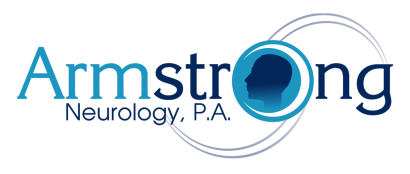Movement Disorders
This section lists a variety of abnormal movements that patients may experience. For simplicity, Parkinson disease and related disorders are discussed in a separate section of the guide.
There are numerous movement disorders. Many of these are benign in nature while others may be indicative of a more serious underlying neurological condition. In this section a number of movement disorders are described. These are further illustrated with video clips to help better understand the nature of the abnormal movements. It is important to understand and consider that these examples provide an illustration of part of the spectrum of presentations for each of these disorders. The degree of severity can vary significantly among patients.
A number of the disorders listed involve abnormal movements of the body but are not what would be considered primary movement disorders. Instead, some of these are abnormal movements that are secondary to neuromuscular disorders. However, they result in abnormal movements that warrant further description.
There are also a smaller group of abnormal movements that occur during sleep which are discussed in a separate section.
This section lists a variety of abnormal movements that patients may experience. For simplicity, Parkinson disease and related disorders are discussed in a separate section of the guide.
There are numerous movement disorders. Many of these are benign in nature while others may be indicative of a more serious underlying neurological condition. In this section a number of movement disorders are described. These are further illustrated with video clips to help better understand the nature of the abnormal movements. It is important to understand and consider that these examples provide an illustration of part of the spectrum of presentations for each of these disorders. The degree of severity can vary significantly among patients.
A number of the disorders listed involve abnormal movements of the body but are not what would be considered primary movement disorders. Instead, some of these are abnormal movements that are secondary to neuromuscular disorders. However, they result in abnormal movements that warrant further description.
There are also a smaller group of abnormal movements that occur during sleep which are discussed in a separate section.
Specific Movement Disorders:
|
Athetosis
Athetosis is a symptom characterized by involuntary convoluted, writhing movements of the fingers, arms, legs, and neck. Movements typical of athetosis are sometimes called athetoid movements. Lesions to the brain are most often the direct cause of the symptoms, particularly to the corpus striatum. This symptom does not occur alone and is often accompanied by the symptoms of cerebral palsy, as it is often a result of this disease. Treatments for athetosis are not very effective, and in most cases are simply aimed at the uncontrollable movement, rather than the cause itself. |
|
|
Ataxia
Ataxia describes a lack of muscle coordination during voluntary movements, such as walking or picking up objects. A sign of an underlying condition, ataxia can affect your movements, your speech, your eye movements and your ability to swallow. Persistent ataxia usually results from damage to your cerebellum — the part of your brain that controls muscle coordination. Many conditions may cause ataxia, including alcohol abuse, stroke, tumor, cerebral palsy and multiple sclerosis. It's also possible to inherit a defective gene that may cause one of many ataxia variants. Treatment for ataxia depends on the underlying cause. Adaptive devices, such as walkers or canes, might help you maintain your independence despite your ataxia. You may also benefit from physical therapy, occupational therapy and speech therapy. |
|
|
Blepharospasm
Blepharo means "eyelid". Spasm means "uncontrolled muscle contraction". The term blepharospasm ['blef-a-ro-spaz-m] can be applied to any abnormal blinking or eyelid tic or twitch resulting from any cause, ranging from dry eyes to Tourette's syndrome to tardive dyskinesia. The blepharospasm referred to here is officially called benign essential blepharospasm (BEB) to distinguish it from the less serious secondary blinking disorders. "Benign" indicates the condition is not life threatening, and "essential" is a medical term meaning "of unknown cause". It is both a cranial and a focal dystonia. Cranial refers to the head and focal indicates confinement to one part. The word dystonia describes abnormal involuntary sustained muscle contractions and spasms. Patients with blepharospasm have normal eyes. The visual disturbance is due solely to the forced closure of the eyelids. Blepharospasm should not be confused with:
|
|
|
Chorea
Chorea is an abnormal involuntary movement disorder, one of a group of neurological disorders called dyskinesias, which are caused by overactivity of the neurotransmitter dopamine in the areas of the brain that control movement. Chorea is characterized by brief, irregular contractions that are not repetitive or rhythmic, but appear to flow from one muscle to the next. Chorea often occurs with athetosis, which adds twisting and writhing movements. Chorea is a primary feature of Huntington's disease, a progressive, hereditary movement disorder that appears in adults, but it may also occur in a variety of other conditions. Syndenham's chorea (also known as St. Vitus Dance) occurs in a small percentage (20 percent) of children and adolescents as a complication of rheumatic fever. Chorea can also be induced by drugs (levodopa, anti-convulsants, and anti-psychotics) metabolic and endocrine disorders, and vascular incidents. |
|
|
Dystonia
In dystonia, muscles contract involuntarily — causing an uncontrollable twisting of the affected body part. Symptoms can be mild or severe, and may interfere with the performance of many day-to-day tasks. Doctors divide dystonia into two broad categories, generalized or focal. If your symptoms begin during your youth, you could have a type of dystonia that's inherited and the symptoms may eventually affect the entire body (generalized). Most cases of dystonia, however, occur in adults and tend to affect only one body part — often the neck, the face or an arm (focal). Medications can sometimes improve dystonia symptoms, but inconsistently. In some more-severe cases, surgery may be used to disable or regulate certain brain regions or nerves. |
|
|
Essential tremor
Essential tremor is the most common type of tremor. In general, tremors occur when there is a problem with the nerves supplying certain muscles. However, everyone has some essential tremor but the movements are usually so small that they can't be seen. The specific cause for essential tremor is unknown. Some research suggests that the cerebellum, the part of the brain that controls muscles movements, does not work correctly in patients with essential tremor. Noticeable essential tremors can be seen at any age but are most common in people older than 65. Essential tremor can also occur with other neurological conditions, including dystonia, parkinsonism, and certain inherited nerve conditions such as Charcot-Marie-Tooth disease. If an essential tremor occurs in more than one member of a family, it is called a familial tremor. This type of essential tremor is passed down through families (inherited), which suggests that genes play a role in its cause. Familial tremor is usually a dominant trait, which means that you only need to get the gene from one parent to develop the disorder. It usually starts in early middle age, but may be seen in people who are older or younger. Neuromodulation is also an FDA-approved treatment option. |
Consider gyrosocopic eating utensils: Weighted gloves are a simple and effective means of easing essential tremor: [These are available on Amazon] Steadiwear is also an option: Consider the option of the Cala device: |
|
Fasciculations
A fasciculation, or "muscle twitch", is a small, local, involuntary muscle contraction and relaxation visible under the skin arising from the spontaneous discharge of a bundle of skeletal muscle fibers (muscle fascicle). Fasciculations have a variety of causes, the majority of which are benign, but can also be due to disease of the motor neurons. |
|
|
Freidreich ataxia
Friedreich's ataxia is an inherited disease that causes progressive damage to the nervous system, resulting in symptoms ranging from gait disturbance to speech problems; it can also lead to heart disease and diabetes. The ataxia of Friedreich's ataxia results from the degeneration of nerve tissue in the spinal cord, in particular sensory neurons essential (through connections with the cerebellum) for directing muscle movement of the arms and legs. The spinal cord becomes thinner and nerve cells lose some of their myelin sheath (the insulating covering on some nerve cells that helps conduct nerve impulses). The condition is named after the German physician Nikolaus Friedreich, who first described it in the 1860s. |
|
|
Hemiballismus
Hemiballismus is a violent, involuntary movement restricted to one side of the body. Usually, it is most marked in the upper limb and in proximal joints. The sudden, continuous projections of the limb may exhaust the patient and cause trauma to skin and joints. Movements may continue during sleep. The classical cause of hemiballismus is damage to the contralateral subthalamic nucleus. Strokes are a common cause in elderly patients. Treatment includes intravenous diazepam and oral haloperidol. |
|
|
Hemifacial spasm
Hemifacial spasm is a neuromuscular disorder characterized by frequent involuntary contractions (spasms) of the muscles on one side (hemi-) of the face (facial). The disorder occurs in both men and women, although it more frequently affects middle-aged or elderly women. The first symptom is usually an intermittent twitching of the eyelid muscle that can lead to forced closure of the eye. The spasm may then gradually spread to involve the muscles of the lower face, which may cause the mouth to be pulled to one side. Eventually the spasms involve all of the muscles on one side of the face almost continuously. The condition may be caused by a facial nerve injury, or a tumor, or it may have no apparent cause. Rarely, doctors see individuals with spasm on both sides of the face. Most often hemifacial spasm is caused by a blood vessel pressing on the facial nerve at the place where it exits the brainstem. |
|
|
Myoclonus
Myoclonus refers to a quick, involuntary muscle jerk. For example, hiccups are a form of myoclonus. So are the sudden jerks, or "sleep starts," you may experience just before falling asleep. These forms of myoclonus occur in healthy people and rarely present a problem. Most often, you hear of myoclonus as a symptom of a nervous system disorder, such as epilepsy, or of a metabolic condition, or as a reaction to a medication. Myoclonus may be caused by a variety of underlying problems. Doctors often separate the types of myoclonus based on their causes, which helps determine treatment. Ideally, treating the underlying cause will help control your myoclonus symptoms. If the cause of myoclonus is unexplained or can't be specifically treated, then treatment focuses on reducing the effects of myoclonus on your quality of life. |
|
|
|
Spasmodic dysphonia
Normal 0 Spasmodic dysphonia is a neurological disorder affecting the voice muscles in the larynx, or voice box. When we speak, air from the lungs is pushed between two elastic structures—called vocal folds or vocal cords—with sufficient pressure to cause them to vibrate, producing voice (see figure). In spasmodic dysphonia, the muscles inside the vocal folds experience sudden involuntary movements—called spasms—which interfere with the ability of the folds to vibrate and produce voice. Spasmodic dysphonia causes voice breaks and can give the voice a tight, strained quality. People with spasmodic dysphonia may have occasional breaks in their voice that occur once every few sentences. Usually, however, the disorder is more severe and spasms may occur on every other word, making a person’s speech very difficult for others to understand. At first, symptoms may be mild and occur only occasionally, but they may worsen and become more frequent over time. Spasmodic dysphonia is a chronic condition that continues throughout a person’s life. Spasmodic dysphonia can affect anyone. It is a rare disorder, occurring in roughly one to four people per 100,000 people. The first signs of spasmodic dysphonia are found most often in people between 30 and 50 years of age. It affects women more than men. |
|
|
Spinocerebellar ataxia
Persons with spinocerebellar ataxia experience a degeneration of the spinal cord and the cerebellum, the small fissured mass at the base of the brain, behind the brain stem. The cerebellum is concerned with coordination of movements, so the "wasting away" of this critical control center results in a loss of muscle coordination. Atrophy in the spine can bring spasticity. There are many types of spinocerebellar ataxia and about 30 different gene mutations have been found. One of the common genetic defects is a an expansion of a CAG triplet repeat. In this way, it is similar to fragile-X syndrome, Huntington disease and myotonic dystrophy, all of which exhibit a triplet repeat expansion of a gene. In the case of spinocerebellar ataxia I, the gene is SCA1, found on chromosome 6. The protein product of the gene - called ataxin-1 - varies in size, depending on the size of the CAG triplet repeat. A homolog of human ataxin-1 has been found in mice, where it is found on chromosome 13 instead of chromosome 6. The two proteins are highly similar, except that in the mouse, the poly-glutamine tract (coded for by the CAG repeat ) is missing, suggesting that it is not essential for normal function in mice. |
|
|
Tardive Dyskinesia
Tardive dyskinesias (TDs) are involuntary movements of the tongue, lips, face, trunk, and extremities that occur in patients treated with long-term dopaminergic antagonist medications. Although they are associated with the use of neuroleptics, TDs apparently existed before the development of neuroleptics. People with schizophrenia and other neuropsychiatric disorders are especially vulnerable to developing TDs after exposure to conventional neuroleptics, anticholinergics, toxins, substances of abuse, and other agents. TDs are most common in patients with schizophrenia, schizoaffective disorder, or bipolar disorder who have been treated with antipsychotic medication for long periods, but TDs occasionally occur in other patients as well. For example, people with fetal alcohol syndrome, other developmental disabilities, and other brain disorders are vulnerable to the development of tardive dyskinesias, even after receiving a single dose of the causative agent. |
|
|
Torticollis
This movement disorder is caused by a dysfunction of the brain. The symptoms are caused by intermittent or sustained contractions of the muscles around the neck which control the position of the head. This causes the head to lean to one side, or be pulled forward or backward. The shoulders may also be uneven and some patients experience tremors in the head or arms. ST is usually accompanied by constant and extreme pain. ST can resemble other disorders including Parkinson's disease, epilepsy, muscular dystrophy and wry neck (an acute episode of pain and spasm in the neck that resolves itself in days or weeks.) ST can limit a person's ability to function. As a localized disability this disorder does not directly affect other body systems. Because it can be more severe during times of anxiety or stress, ST was once thought to be a psychiatric disorder. Research has shown, however, that while ST does indeed seem to originate in the brain, it is clearly a neurological disorder rather than a psychiatric one. |
|
|
Tourette syndrome
Tourette syndrome is named for Georges Gilles de la Tourette, who first described this disorder in 1885. There is strong evidence that Tourette syndrome is passed down through families, although the gene has not yet been found. The syndrome may be linked to problems in certain areas of the brain, and the chemical substances (dopamine, serotonin, and norepinephrine) that help nerve cells talk to one another. Tourette syndrome can be either severe or mild. About 10% of Americans have a mild tic disorder, but far fewer have more severe forms of Tourette syndrome. Many people with very mild tics may not be aware of them and never seek medical help. Tourette syndrome is four times as likely to occur in boys as in girls. Most affected people first notice symptoms of Tourette syndrome during childhood, between ages 7 and 10. Symptoms of Tourette syndrome can range from almost unnoticeable minor movements (such as grunts, sniffling, or coughing) to continuing, uncontrollable movements and sounds (vocalizations). The symptoms tend to get better and worse. Symptoms usually get worse before the mid-teen years. The most common first symptom is a facial tic. Other tics may follow. Contrary to popular belief, use of curse words or other inappropriate words or phrases (coprolalia) occurs in only a small number of patients. |
|
|
Wilson disease
Wilson's disease or hepatolenticular degeneration is an autosomal recessive genetic disorder in which copper accumulates in tissues; this manifests as neurological or psychiatric symptoms and liver disease. It is treated with medication that reduces copper absorption or removes the excess copper from the body, but occasionally a liver transplant is required.[1] The condition is due to mutations in the Wilson disease protein (ATP7B) gene. A single abnormal copy of the gene is present in 1 in 100 people, who do not develop any symptoms (they are carriers). If a child inherits the gene from both parents, they may develop Wilson's disease. Symptoms usually appear between the ages of 6 and 20 years, but cases in much older people have been described. Wilson's disease occurs in 1 to 4 per 100,000 people. Wilson's disease is named after Samuel Alexander Kinnier Wilson (1878–1937), the British neurologist who first described the condition in 1912. |
|
______________________________________________________________________
The following series of videos is a general synopsis of a range of different types of movement disorders. Many of these are described in more detail in the other sections outlined here.
|
|
|
|
|
______________________________________________________________________





